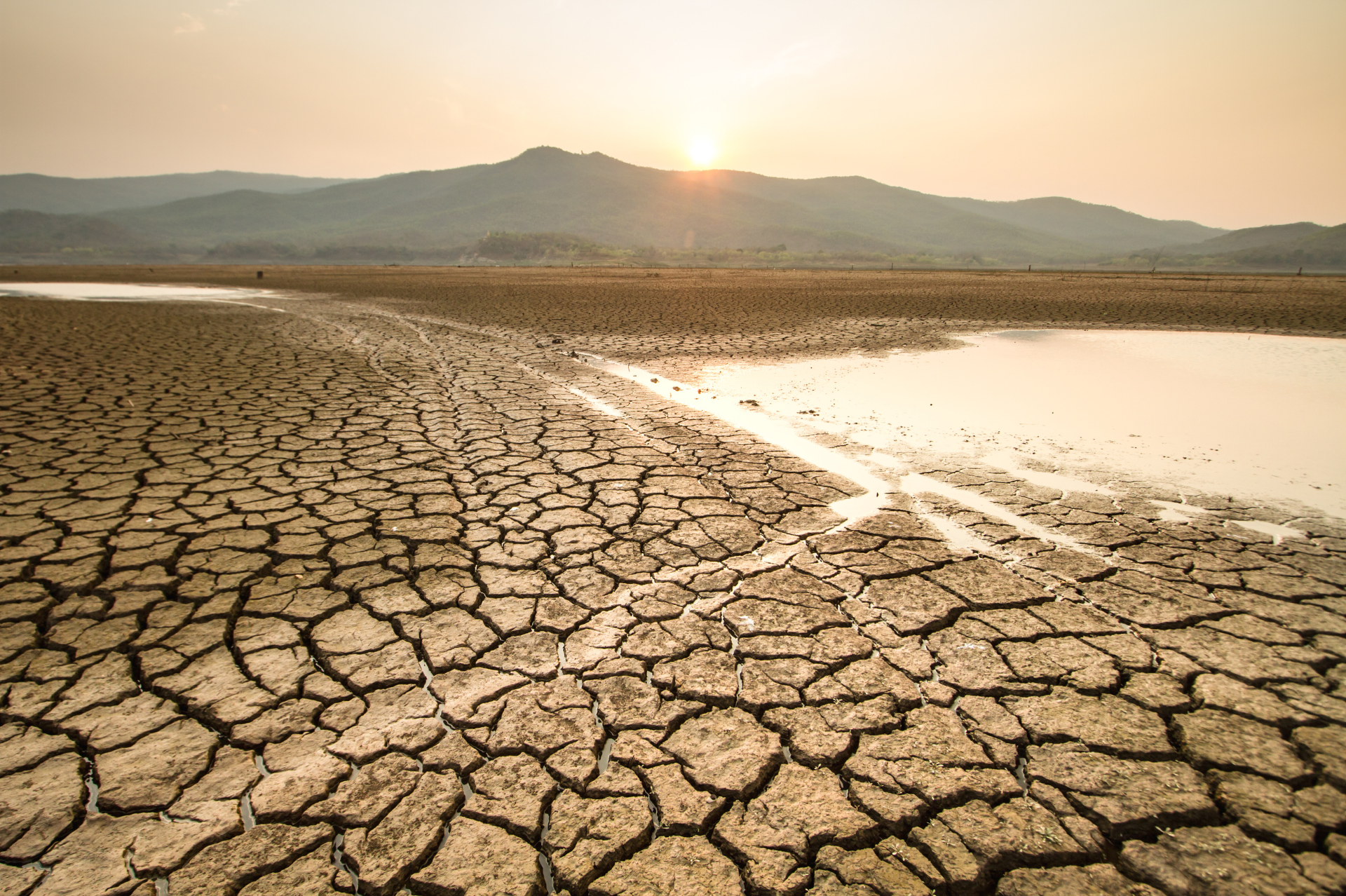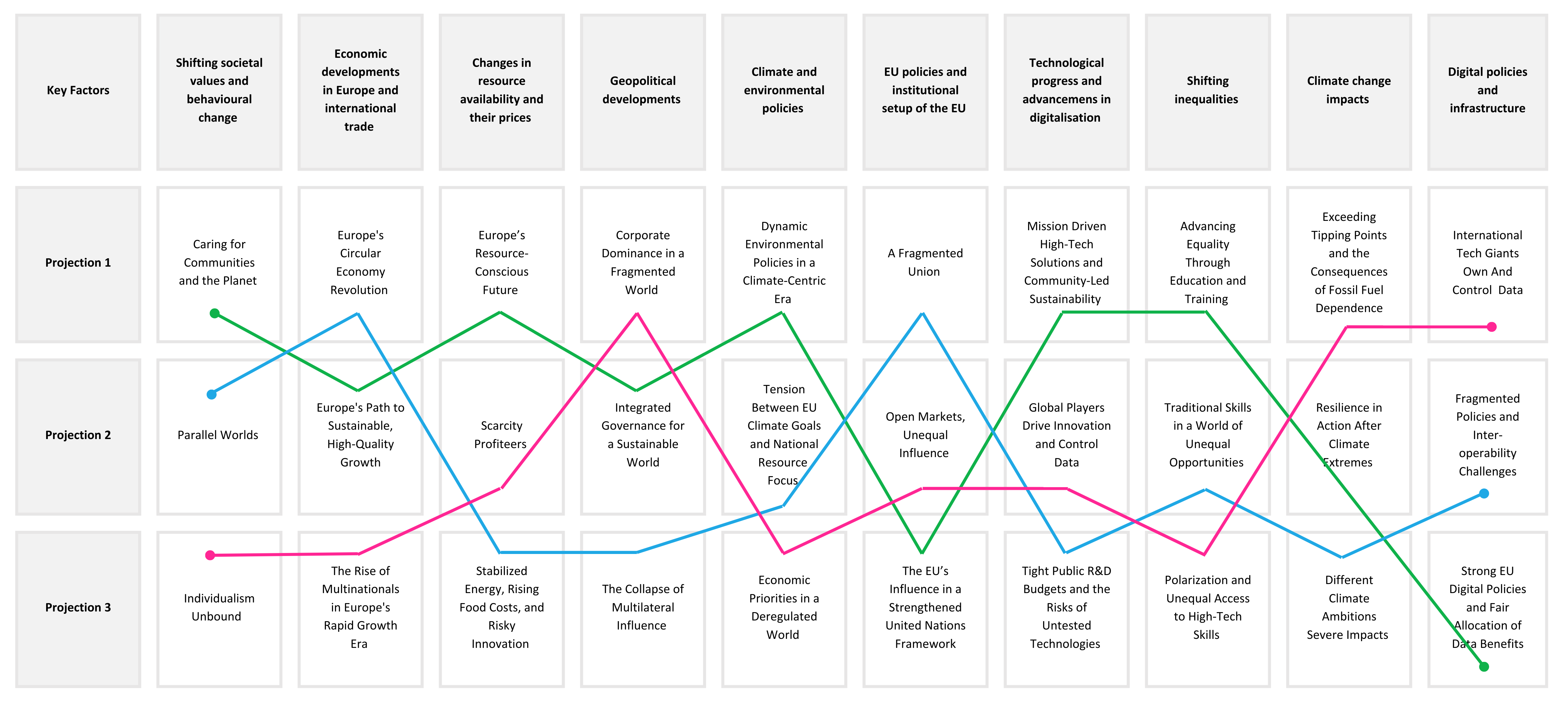This scenario explores the implications of an economic and political landscape dominated by multinational corporations. While innovation accelerates and the economy booms, the cost is steep: rising inequalities, weakened public governance, and mounting environmental crises.
The 4Growth Foresight Module, developed by foresight experts from Future Impacts, provides a structured framework to explore potential pathways for the digital transformation of agriculture and forestry across Europe. After examining futures centred on sustainability (Reimagining Progress) and regional fragmentation (The Fractured Continent), we now turn to the third and final alternative framework scenario: The Corporate Epoch.

This scenario imagines a Europe in 2040 shaped by powerful multinational corporations. Innovation accelerates and economic indicators soar, but these gains come with significant costs: deepening inequalities, weakened public institutions, and escalating environmental risks.
By 2040, multinational corporations dominate Europe’s governance, economy, and society. These global players drive innovation, control global value chains, and influence political agendas, thus effectively displacing public governance in many domains. Governments rely on corporate platforms for data, infrastructure, and decision-making tools – cementing a dependency that shapes the trajectory of digital agriculture and forestry.
Key characteristics of this scenario include:
In 2040, Europe is driven by performance and competition, with self-interest shaping societal values. The economy booms, driven by multinational corporations reliant on fossil fuels. These tech and resource giants dominate innovation, shape politics, and control global value chains, sidelining smaller players. Governments depend on them for data and resources, deepening inequalities.
Resource scarcities, worsened by monocultures and climate change, drive price spikes and market instability. Resource-rich entities tighten control, widening global inequalities. EU inequality grows as the middle class shrinks. High-tech skills remain exclusive, leaving most in precarious jobs with little upward mobility. Resistance to corporate dominance fuels social divides.
Global warming surpasses +3°C by 2100, triggering environmental tipping points. Coastal regions face rising seas and infrastructure collapse, while inland areas suffer desertification, droughts, and agricultural failures, deepening resource crises.

By 2040, digital agriculture and forestry are controlled by multinational corporations using AI and robotics to maximise profits. These giants dominate global supply chains, sidelining small players and leaving rural workers in low-wage and unstable jobs. Tech-driven practices prioritise yields over sustainability, causing monocultures and environmental harm.
A small number of competing multinational corporations dominate the global bioeconomy: the agribusiness from farm to fork (up to the digital cooking device) and the wood processing industry from forest to furniture or building. They structure primary production based on an efficiency- and output-optimised approach, aligning food and wood processing with Industry 4.0 digitalisation. Even more, the platform defines the major rules set and governance structure for all producers, consumers, and market partners, replacing the role of public governments. Competitors build up their own digital monopoles and walled garden platforms with digital software, hardware, and proprietary AI models optimised for internal data exchange in their business ecosystem, but high hurdles for exchange to the competitor’s system.
Data flows within centralised monopolised data spaces that are owned and controlled by the dominant corporation. AI models drive resource allocation, pricing, and production decisions, as well as investments and granting of loans. Market actors must use corporate systems like trade platforms and finance exchange systems. Non-corporate farmers and foresters remain independent but are pressured into a corporate digital ecosystem where access to AI-powered advisory systems, robotics, and sensors depends on costly licenses or exclusive contracts. Weather and environmental remote sensing and monitoring are based on corporate satellites and digital infrastructure. Traceability and monitoring within a digital ecosystem are high, integrating all types of primary production data into product information, as well as consumer data such as health, income, consumption and dietary patterns into personalised marketing recommendation algorithms.
Multinational agribusinesses and agrochemical firms lead, driving industrialised farming and forestry practices that erode biodiversity and address climate effects rather than causes. Monoculture farming expands to advance AI-driven precision agriculture and logging. Nature must adapt to the machines at the cost of biodiversity loss, soil depletion and risk of ecosystem collapse. Climate instability and ecosystem fragility in food and forestry supply chains come with temporary food shortages and forest damage risks. The global activities of corporations allow them to balance risks by importing and exchanging resources globally, while benefiting from temporary sharp rises in market prices. Digital agriculture and forestry have become both a geopolitical asset and a target for cyber-security threats.
Rapid innovation driven by big corporations and tech startups deepens inequality, marginalising underserved regions and limiting equitable transformation. Fully automated agribusinesses and forestry operations replace human labour using AI-driven precision farming, robotic harvesting, and automated processing. A skilled elite dominates high-tech food and resource production, while low-income workers face job precarity in manual labour sectors.
Rural communities decline as traditional farming and forestry jobs disappear, and workers lack access to reskilling programmes controlled by corporate AI platforms. As climate change worsens, resource scarcities drive up prices and widen wealth gaps. Corporations control water, soil, and land data, sidelining small farms. Despite boosting productivity, advanced technologies harm biodiversity and soil health, fuelling social unrest and calls for less invasive, green practices.
The Corporate Epoch scenario serves as a stark warning. It presents a plausible future where technological and economic progress lead to social fragmentation, weakened governance, and ecological instability.
Key strategic questions emerge:
Through this lens, 4Growth underscores the importance of anticipatory governance, open standards, and inclusive digital ecosystems to safeguard Europe’s resilience.
Together, the three foresight scenarios—Reimagining Progress, The Fractured Continent, and The Corporate Epoch—present a spectrum of plausible futures for Europe’s agriculture and forestry sectors in a digital age. Each scenario explores the interplay between governance structures, market forces, and technology adoption under different socio-political dynamics.
The morphological box below presents the key factors alongside their potential future development projections for 2040. The lines indicate plausible combinations used to construct the three scenarios, ensuring plausibility and consistency in their development.

The foresight narratives are not predictions but tools for reflection and strategic planning. They illuminate the critical decisions policymakers, businesses, and communities face today, decisions that will shape Europe’s digital agriculture and forestry landscape for decades to come.